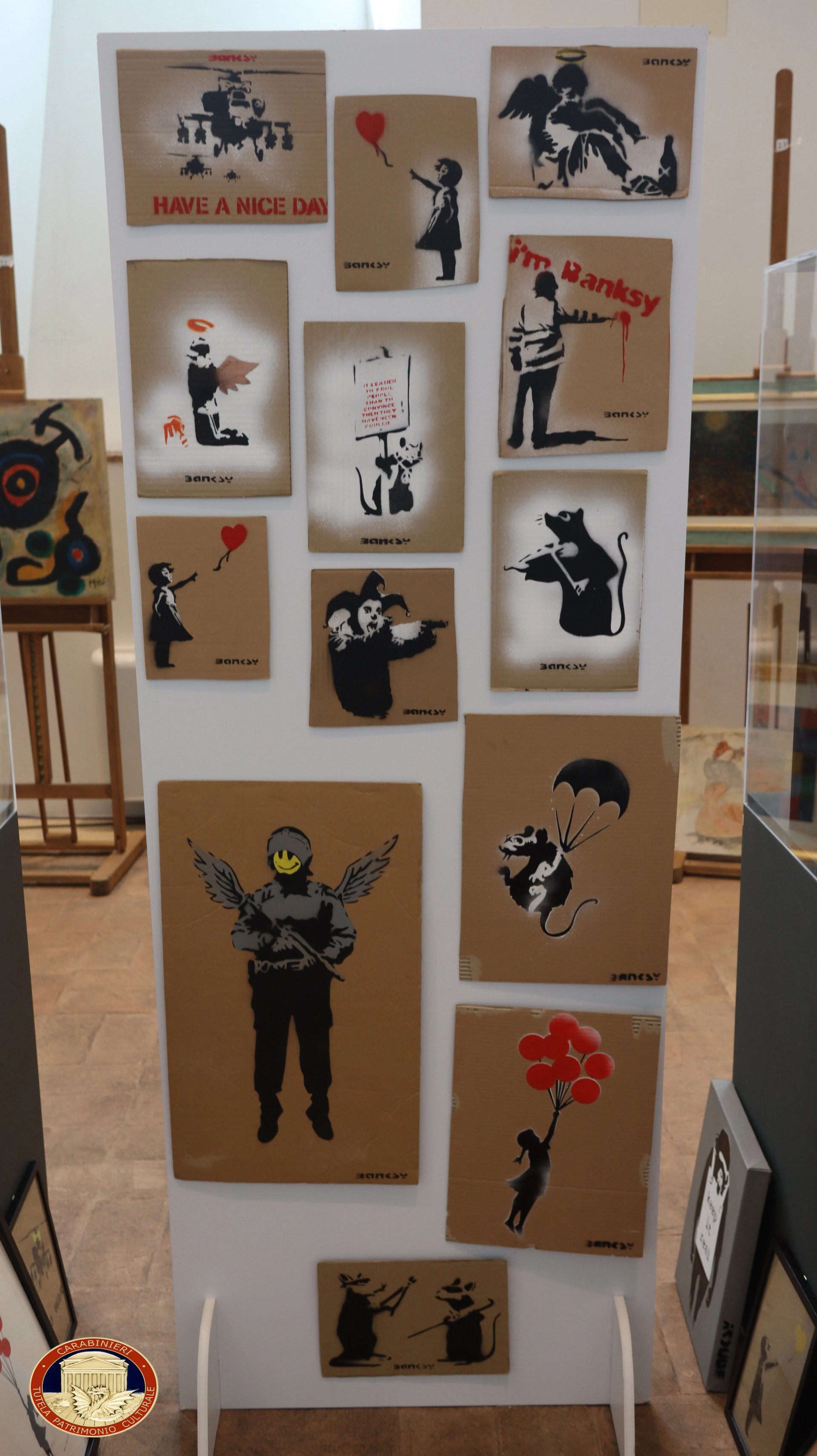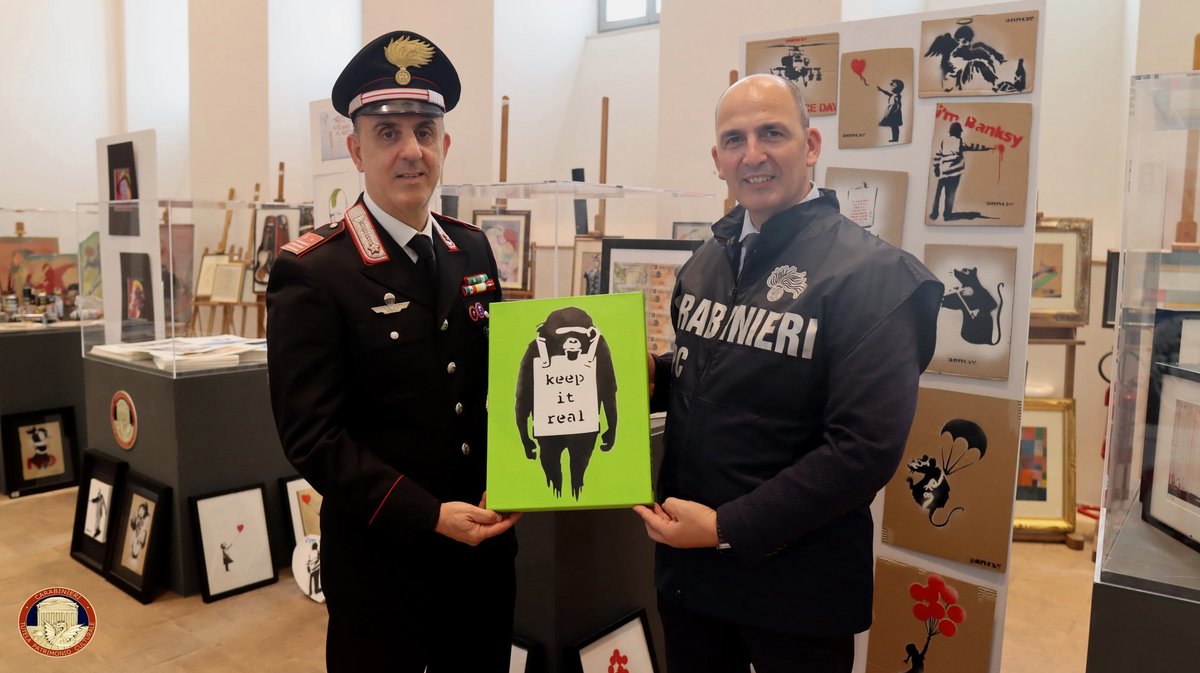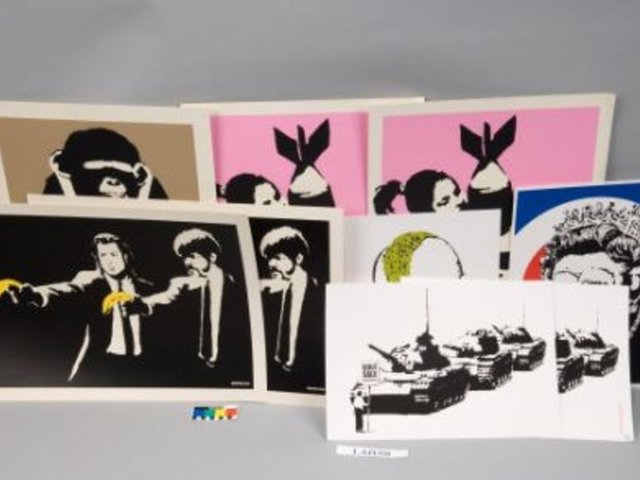An Italian art historian says he has helped identify and verify more than 2,000 fake Banksy works seized as part of an investigation into a vast Europe-wide art fraud operation. The haul of counterfeit works was unveiled earlier this week as part of a joint operation between the prosecutor's office of Pisa, the Carabinieri cultural heritage protection unit (a branch of Italy’s national police) and the European agency Eurojust.
Stefano Antonelli, the founder of the Banksy Study Centre and Archive Foundation, says that most of the Banksy works confiscated were stamped “Dismaland”, the dystopian theme park opened by the notorious street artist in Weston-super-Mare, UK, in 2015.
Antonelli was brought in by prosecutors in the Tuscan city of Pisa who have accused 38 people of producing more than 2,100 fake works by artists such as Claude Monet, Vincent van Gogh, Salvador Dalí, Henry Moore, Joan Miró and Giorgio de Chirico.
Lorenzo Galizia, the Commander of the cultural heritage protection unit in Rome, says: "The 38 people have been reported [to the police] but are still under investigation." A spokesperson for Eurojust says however: "They have been charged with conspiracy to forge and deal in contemporary art." Many of the works seized are on show at Palazzo Toscanelli in Pisa (until 15 November).
The investigation was sparked last year by the seizure in Pisa of 200 forged works including a copy of Caryatid by Amedeo Modigliani. This led to the discovery of counterfeit workshops in Italian towns such as Lucca and Pistoia and other European bases.
At a press conference on 11 November, Teresa Angela Camelio, the prosecutor of Pisa, said that “uncovering the counterfeiters' chain has allowed us to confirm the existence of a dense European network [of forgeries] created between Spain, France and Belgium".

Other artists' works have also been forged © Carabinieri - Cultural Heritage Protection Command
In a statement posted online, Eurojust confirmed it was part of the international operation, saying: “Once the fake works of art were produced, the network would work with several complicit auction houses in Italy to sell the pieces. To ensure the credibility of the auctions, exhibitions were organised throughout Italy and a catalogue of the art was published.”
Eurojust adds: “As the investigation uncovered a European forgery network, cross-border judicial cooperation was initiated at Eurojust. Eurojust ensured that three European investigation orders were issued against six suspects in Spain, France and Belgium. The searches led to the discovery of forgery workshops and the seizure of 1,000 fake works of art and more than 500 forged certificates and stamps of authenticity.”
Stefano Antonelli explains his role further. “I confirm that I helped check more than 2,000 fake Banksy works with the Pisa prosecutor. The investigation is ongoing; technically my duty is to write a report on every single piece explaining, through documentation, why they are fake. [This evidence] will be used in the tribunal by the prosecutor,” he tells The Art Newspaper.

Some of the seized works purportedly by Banksy © Carabinieri - Cultural Heritage Protection Command
Asked to explain the mission of the Banksy Study Centre and Archive Foundation, Antonelli says “it is a non-profit organisation, the purpose of which is to make the Banksy Archive documentary fund available to the public—to archive, catalogue, study, promote and protect the work of the artist Banksy. It is not connected or supported in any way by Banksy”.
The foundation does not authenticate works by Banksy, Antonelli stresses. “The only authority responsible for issuing certificates of authenticity relating to a work by Banksy is the British company Pest Control office ltd.” Pest Control was contacted for comment.




